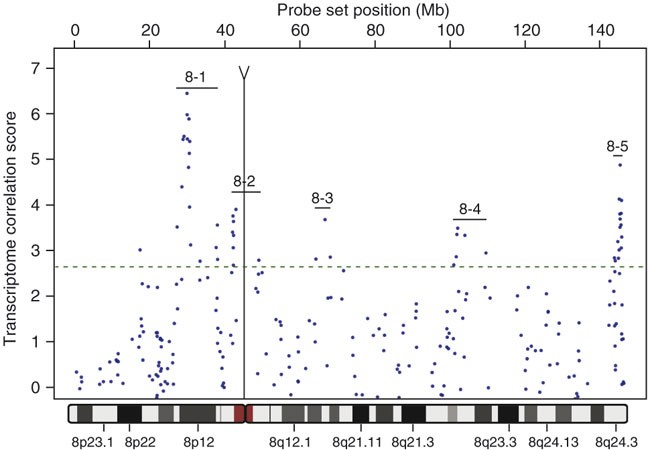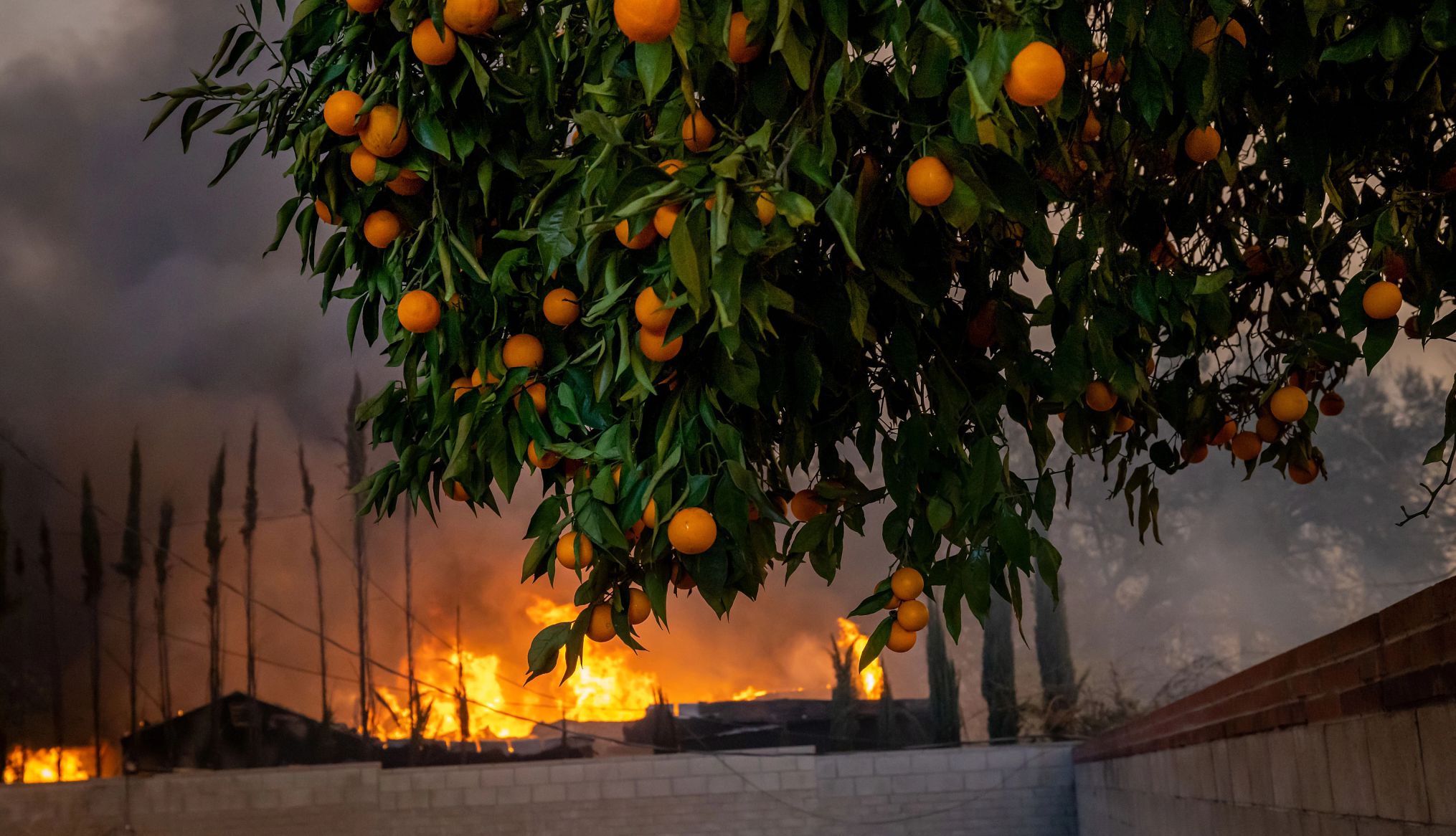- Select a language for the TTS:
- UK English Female
- UK English Male
- US English Female
- US English Male
- Australian Female
- Australian Male
- Language selected: (auto detect) - EN
Play all audios:
ABSTRACT Insecticide-resistant and susceptible clones of _Myzus persicae_ were induced to produce sexual morphs and crossed in the laboratory. Progeny clones were analysed for karyotype,
esterase (E4, FE4 or S) gene type and activity, and amplified _E4_ and _FE4_ genes were located on their chromosomes by fluorescence _in situ_ hybridization (FISH). Amplified _FE4_ genes of
resistant parent clones (800F and French R) were inherited according to expectations. Chromosomal locations of these genes (on autosomes 1 and 3 in 800F, and on 1 and 2 in French R) were
confirmed by FISH analysis of progeny that had inherited an autosome 2 marker (a dissociation) from the susceptible parent (DS). Inheritance of amplified _E4_ genes could not be studied
directly as none of the available clones was able to produce mating females. Males from two clones with amplified _E4_ genes (and with the A1,3 translocation that is common to all
E4-producing genotypes) were therefore mated with females from clones with amplified _FE4_ genes at known chromosomal locations. Progeny were obtained with both _E4_ and _FE4_ genes, a
combination not yet found in nature. Analysis of F1 and subsequent generations confirmed that the amplified _E4_ site on autosome 3T is close to the translocation breakpoint, and apparently
coallelic with the amplified _FE4_ site on the normal autosome 3 inherited from 800F. One of the translocated parent clones (4156) had two additional _E4_ sites, unlinked to the
translocation, which were inherited according to expectation. Esterase activities of progeny clones, measured by immunoassay, mostly corresponded to the number of amplified sites inherited,
with some discrepancies which could be attributed to copy number differences between sites, inheritance of partially methylated genes from French R, or position effect variegation at the
site on 3T. Inheritance of the A1,3 translocation in two crosses differed markedly from expectation. SIMILAR CONTENT BEING VIEWED BY OTHERS A SELF-ELIMINATING ALLELIC-DRIVE REVERSES
INSECTICIDE RESISTANCE IN _DROSOPHILA_ LEAVING NO TRANSGENE IN THE POPULATION Article Open access 17 November 2024 ENGINEERING MULTIPLE SPECIES-LIKE GENETIC INCOMPATIBILITIES IN INSECTS
Article Open access 08 September 2020 ADAPTATION BY COPY NUMBER VARIATION INCREASES INSECTICIDE RESISTANCE IN THE FALL ARMYWORM Article Open access 12 November 2020 ARTICLE PDF REFERENCES *
Blackman, R L. 1988. Rearing and handling aphids. In: Minks, A. K. & Harrewijn, P. (eds) _Aphids, their Biology, Natural Enemies and Control_, vol. 2B, pp, 59–68. Elsevier, Amsterdam.
Google Scholar * Blackman, R L, and Takada, H. 1977. The inheritance of natural chromosomal polymorphisms in the aphid _Myzus persicae_ (Sulzer). _Genetica_, 47, 9–15. Article Google
Scholar * Blackman, R L, Devonshire, A L, and Sawicki, R M. 1977. Co-inheritance of increased carboxylesterase activity and resistance to organophosphorus insecticides in _Myzus persicae_
(Sulzer). _Pest Sci_, 8, 163–166. Article CAS Google Scholar * Blackman, R L, Spence, J M, Field, L M, and Devonshire, A L. 1995. Chromosomal location of the amplified esterase genes
conferring resistance to insecticides in the aphid _Myzus persicae_. _Heredity_, 74, 297–302. Article Google Scholar * Devonshire, A L, and Field, L M. 1991. Gene amplification and
insecticide resistance. _Ann Rev Ent_, 36, 1–23. Article CAS Google Scholar * Devonshire, A L, and Sawicki, R M. 1979. Insecticide-resistant _Myzus persicae_ as an example of evolution by
gene duplication. _Nature_, 280, 140–141. Article Google Scholar * Devonshire, A L, Moores, G D, and Ffrench-Constant, R H. 1986. Detection of insecticide resistance by immunological
estimation of carboxylesterase activity in _Myzus persicae_ (Sulzer) and cross reaction of the antiserum with _Phorodon humuli_ (Schrank) (Hemiptera: Aphididae). _Bull ent Res_, 76, 97–107.
Article CAS Google Scholar * Dover, G A. 1986. Molecular drive in multigene families: how biological novelties arise, spread and are assimilated. _Trends Genet_, 2, 159–165. Article CAS
Google Scholar * Ffrench-Constant, R H, Devonshire, A L, and White, R P. 1988. Spontaneous loss and reselection of resistance in extremely resistant _Myzus persicae_ (Sulzer). _Pestic
Biochem Physiol_, 30, 1–10. Article CAS Google Scholar * Field, L M, Devonshire, A L, and Forde, B G. 1988. Molecular evidence that insecticide resistance in peach-potato aphids (_Myzus
persicae_ Sulz.) results from amplification of an esterase gene. _Biochem J_, 251, 309–312. Article CAS Google Scholar * Field, L M, Devonshire, A L, Ffrench-Constant, R H, and Forde, B
G. 1989. Changes in DNA methylation are associated with loss of insecticide resistance in the peach-potato aphid _Myzus persicae_ (Sulz.). _FEBS_, 243, 323–327. Article CAS Google Scholar
* Field, L M, Williamson, M S, Moores, G D, and Devonshire, A L. 1993. Cloning and analysis of the esterase genes conferring insecticide resistance in the peach-potato aphid, _Myzus
persicae_ (Sulzer). _Biochem J_, 294, 569–574. Article CAS Google Scholar * Newton, C, and Dixon, F G. 1987. Methods of hatching the eggs and rearing fundatrices of the English grain
aphid, _Sitobion avenae_. _Entomologia exp appl_, 45, 277–281. Article Google Scholar * Puterka, G J, and Slosser, J E. 1986. Influence of host and temperature on greenbug, _Schizaphis
graminum_ (Rondani), egg hatch. _Southwest Entomol_, 11, 75–81. Google Scholar * Via, S. 1992. Inducing the sexual forms and hatching the eggs of pea aphids. _Entomologia exp appl_, 65,
119–127. Article Google Scholar * Wipperfürth, T, and Mittler, T E. 1986. A method for hatching eggs of the aphid _Schizaphis graminum_. _Entomologia exp appl_, 42, 57–61. Article Google
Scholar Download references AUTHOR INFORMATION AUTHORS AND AFFILIATIONS * Department of Entomology, The Natural History Museum, London, SW7 5BD, UK R L Blackman & J M Spence *
Biological and Ecological Chemistry Department, IACR-Rothamsted, Harpenden, AL5 2JQ, Herts, UK L M Field, N Javed, G J Devine & A L Devonshire Authors * R L Blackman View author
publications You can also search for this author inPubMed Google Scholar * J M Spence View author publications You can also search for this author inPubMed Google Scholar * L M Field View
author publications You can also search for this author inPubMed Google Scholar * N Javed View author publications You can also search for this author inPubMed Google Scholar * G J Devine
View author publications You can also search for this author inPubMed Google Scholar * A L Devonshire View author publications You can also search for this author inPubMed Google Scholar
RIGHTS AND PERMISSIONS Reprints and permissions ABOUT THIS ARTICLE CITE THIS ARTICLE Blackman, R., Spence, J., Field, L. _et al._ Inheritance of the amplified esterase genes responsible for
insecticide resistance in _Myzus persicae_ (Homoptera: Aphididae). _Heredity_ 77, 154–167 (1996). https://doi.org/10.1038/hdy.1996.120 Download citation * Received: 05 October 1995 * Issue
Date: 01 August 1996 * DOI: https://doi.org/10.1038/hdy.1996.120 SHARE THIS ARTICLE Anyone you share the following link with will be able to read this content: Get shareable link Sorry, a
shareable link is not currently available for this article. Copy to clipboard Provided by the Springer Nature SharedIt content-sharing initiative KEYWORDS * esterase genes * FISH * gene
amplification * immunoassay * insecticide resistance * position effect





